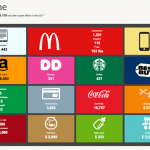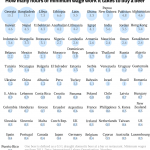The Future of Retail Checkout: No Checkout at All?

“People have said when checkout is working really well, it will feel like stealing. You grab a pair of shoes and you just walk out.” That’s how Michael Chui, a partner at the McKinsey Global Institute, describes the retail-checkout experience in your not-too-distant future.
This coming transformation in the way you pay for items in bricks-and-mortar stores will occur through a network of sensors placed strategically around stores, which will enable retailers to recognize you (through your smartphone or other devices) when you walk through the door. Inexpensive sensors also will be attached to (or embedded in) items available for purchase. And the stores will already have your preferred payment information on file, so when you exit the store with your chosen merchandise, you’ll simply be billed automatically, totally skipping any traditional checkout experience.
Many restaurants are already in the vanguard of transforming the checkout experience. As Alexis Madrigal explained two years ago here, a growing number of restaurants are using iPads or other tablets to have diners place their own orders and then check themselves out at the end of the meal. If such a change becomes widespread, as Madrigal pointed out, the implications for waitstaff employment will be profound.
Retail stores are heading in that direction too. According to M.V. Greene, writing in Stores, a trade magazine for retailers:
The “Internet of Things,” where objects in the physical world are connected to electronic virtual networks, is poised to turn retail on its head. Not since the introduction of online shopping – and before that credit and debit cards for purchasing – has something in retail had the potential to be so transformative.
Usually, when we think of “transformative” changes, we’re talking about things most people didn’t even anticipate coming at the time: examples include the radio, the atomic bomb, the Internet. But this coming change in our retail experience is, I would guess, something that many people wouldn’t find all that surprising. After all, the history of retail shopping is one of task-shifting.
More recently, efficiencies have built on that model of having the customer do more of the work, now augmented by technology. For example, a growing number of grocery chains have “intelligent” carts that can total up items as a customer moves through the store, tracking movement and making recommendations. And in many stores, especially grocery and drug-store chains, customers can use self-checkout kiosks. In Apple stores, for a couple of years already, you’ve been able to buy off-the-shelf items using an app on your smartphoneand walk out of the store with your merchandise, having never interacted with a salesperson.
But just because the coming changes in retail checkout aren’t beyond our imagining doesn’t mean that they’re unimportant. For one thing, they’re likely to have profound effects on retail employment. In fact, according to data from The Economist, retail workers are among those whose jobs are most likely to be displaced by digital or computer-related technologies in the next 20 years. (I should note that the U.S. Bureau of Labor Statistics holds a different view, projecting that growth in the number of retail-sales jobs is likely to hold steady—at about 10 percent—over the next decade. Your guess as to who is right may be better than mine, but I’m putting my money with the folks at The Economist.)
Apart from employment concerns, the vision of a digitally-automated retail future provokes unease about privacy issues. As M.V. Greene notes, “a major hurdle for brands and retailers is to gain the trust of consumers when their personal data is flying back and forth in real-time across networks.” Greene quotes David Dorf, a Senior Director of Technology Strategy at Oracle Retail, who says retailers have to be worried about a “creepiness factor” related to the privacy of consumer data.
Dorf advises merchants to avoid a “stalker” configuration as they deploy these new technologies and adopt a “butler” configuration instead. “The stalker wants something from you and typically is trying to get as much information as possible and wanting to directly impact you.” By contrast, “The butler is kind of always in the background, always helping you, pointing things out that might be of interest, trying to make your life easier.”
“If retailers can focus on this butler mentality,” Dorf predicts, “the Internet of Things has a lot of potential to make the customer experience more rich and engaging, and loyalty will ensue.”
It’s oddly reminiscent of another Internet-enabled butler, the early search engine Ask Jeeves. It could take a few years, but we may soon see how a Jeeves-like digital figure fares in the brick-and-mortar world.
To contact the author, write TierneyJT at gmail.
Sourced from theatlantic.com

























Recent Comments